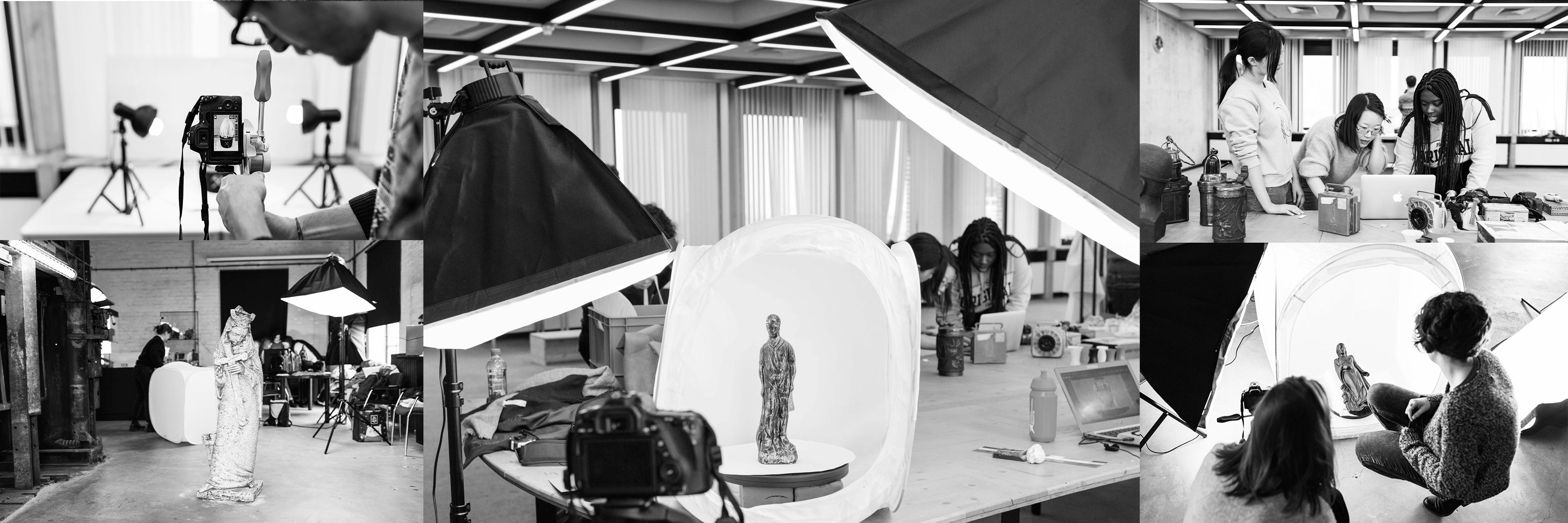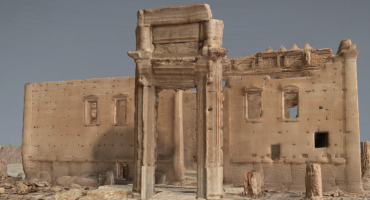Mining the Netherlands: Intriguing Stories Brought to Light through a 3D Digital Collection
The COVID-19 pandemic and the necessary physical and consequent social isolation made clear the increasing need for more (but also better) digital content. Advancements in software, hardware and web-viewing platforms have democratized the process of 3D digitisation and have enabled both cultural heritage institutions as well as heritage enthusiasts and amateurs to create their own 3D models and collections, thus enabling virtual engagement with the material remains of the past. Despite the potential of 3D models to provide both researchers and the general public with the means to engage with the biography of those objects, they often lack adequate spatial, temporal, and sensorial contextualisations. As a result, they are only seen as works of art, thus neglecting their rich history and archaeology and their potential to create deep and immersive engagements with heritage.
To respond to this challenge, 37 students of the MA Media Studies: Digital Cultures at Maastricht University, as part of the research-led course, Creating Digital Collections (Coordinated by Costas Papadopoulos and Susan Schreibman), developed a 3D collection that centered on what was a key natural resource as well as a source of pride and identity for The Netherlands: Coal Mining. In collaboration with the Nederlands Mijnmuseum in Heerlen, the students developed the project Mining The Netherlands: Intriguing Stories Brought to Light Through a 3D Digital Collection, which is publicly available online. We were very lucky to have worked on this with the Nederlands MijnMuseum in Heerlen and the museum curator, Simone Classens, who so graciously opened the doors of her institution to this class project.
The Course: Creating Digital Collections
The course lasted for three months (January to March 2020) during which students undertook the entire project lifecycle. It has been designed as a capstone project during which students reinforce the theories, methods, and skills they have learnt in their previous courses.
On the first day of the course after the Christmas holidays, we spent the day with all our students at the Nederlands Mijnmuseum. We used their lecture room to give them an introduction to the course and had them familiarise themselves with the curator, volunteers, and, most importantly, the collection. The latter was especially critical since they had to go back a few weeks later to digitise a selection of mining objects. Trying to figure out how to deal with such a large number of students, we decided to divide them into nine groups (four members each) based on the themes they would like to work on. The themes were related to objects of the collection and how these could be contextualised. While one group oversaw the web design, the other groups focused on: introduction to mining and Dutch mines, Saint Barbara, health and safety, daily life, mining culture, lamps, branding, and communication systems.
Capturing and processing the objects
Students used Structure-from-Motion to digitise in 3D almost 80 mining-related objects and built a WordPress website to host the collection and craft the narratives around these objects. Students encountered many difficulties in both capturing and processing due to the unique nature of the mining objects: made of metal or glass, having very smooth and often monochromatic surfaces, and being highly reflective. During capturing we had to follow a strict photography protocol but we also had to improvise by using lightboxes, portable lights, different backgrounds, reflectors, and diffuse filters to try as much as possible to build a good photographic dataset. One of the challenges when working with cultural heritage objects is that you rarely have unlimited access to them, and therefore, it is key to invest time and effort in the creation of the image dataset.
Agisoft Metashape was used for processing and we were lucky enough that their cloud service was still in Beta and thus freely accessible. Processing entailed lots of trial and error, hours or even days of work, constant feedback and troubleshooting and collaboration. Out of the 76 objects that were originally captured, the students managed to create some 70 decent models that formed the basis for the narratives of the project.
Sketchfab was chosen as the platform to host the 3D models as it provided students with easy-to-use tools to upload the models, create annotations, and embed them on the project’s WordPress site. And since we were working with a heritage institution, Sketchfab was as always willing to support us by giving us a premium membership that allowed us to have more flexibility with the models.
Developing the narratives and managing the project
To develop the narratives, students interviewed former miners and mining experts, created videos, animations, quizzes, and interactive content, as well as a section for children. Ultimately, they created a multimodal and interactive online space that communicates facets of Dutch mining history in a creative and engaging way. To make sure that each team was developing their parts according to schedule and was able to efficiently communicate with the whole class as well as separate groups, various digital tools, including Google Docs and Google Sheets, Trello, Gantt Charts, and Freedcamp, were used. These tools ensured that communication was timely, everyone was aware of their roles, responsibilities, and deadlines, and we could also intervene when needed.
Project-based learning
Essentially, this course takes a project-based approach to problem-based learning; students learn how to bridge theory and practice through the making process and its products. They work in a professional environment by collaborating with a cultural heritage institution and they learn how to be responsible for their work and their decisions. Students are taken outside the university bubble and given the opportunity to take ownership of a project, working towards a communal achievement. They undertake the entire project’s life cycle, therefore also dealing with project and time management, realizing that the process is as important as the product. They are really driving their own learning, conducting research, and finding ways around setbacks in realizing the project’s goals. And by being allowed to make mistakes—within a carefully supervised framework—they learn to reflect critically. Ultimately, students get prepared for a highly competitive digital and creative economy by applying their skills and knowledge to a real-world setting and developing a professional project. The project recently received the Communicating Europe Award for Research-Teaching Integration by the Centre for European Research in Maastricht.
Looking forward
Running this kind of project entirely virtually can be a challenge. Last year we were lucky enough to have finished the course by the beginning of the pandemic, however, this year we had to adapt the course so that it would fit within the constraints the pandemic posed. As it was impossible to get access to a museum collection, the project focused on creating a collection of objects that epitomize the pandemic for each of us as individuals, but which, taken together, bridges our individual experiences into a collective response. We hope to write about it in a future post.
Costas on Twitter / Costas at UM / Digital Cultures MA on Twitter / Project Site / Nederlands Mijnmuseum / Nederlands Mijnmuseum on Twitter



